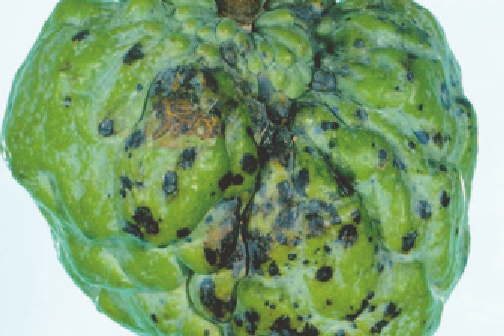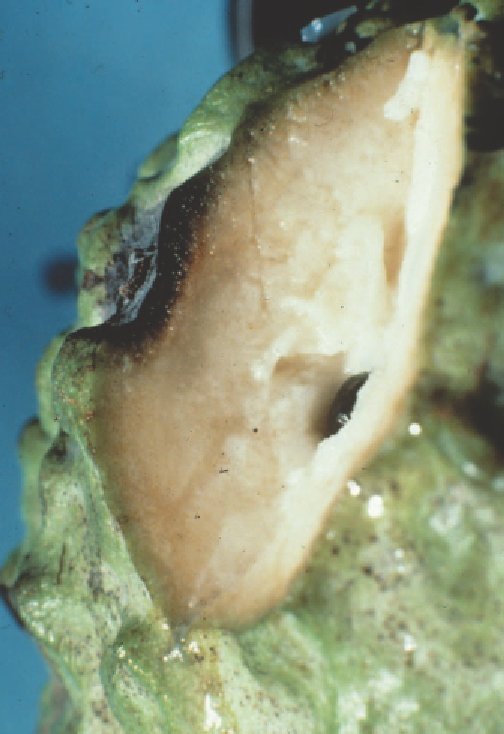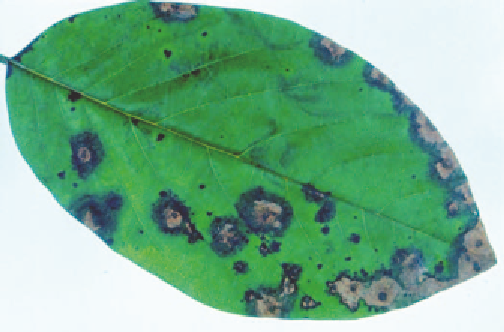Agriculture Reference
In-Depth Information
CYLINDROCLADIUM LEAF AND FRUIT
SPOT
Cause
The fungus
Cylindrocladium colhounii
.
Symptoms
In the cultivar African Pride, symptoms first appear on
leaves and fruit as small spots, with a diameter of 1-2 mm.
These enlarge and coalesce to form irregular patches,
especially where moisture runs down the fruit. Fruit spots
are skin deep, black and not sunken, and become dry and
cracked. Less frequently, leaf and fruit spots become larger
blotches 5-10 mm in diameter. First field symptoms are
often in lower parts of the tree, especially where limbs and
fruit contact the soil or where soil splash occurs. Lesions may
occur on young feeder roots in infected litter. The cultivar
Pink Mammoth is less severely affected than African Pride.
Source of infection and spread
The fungus is a soil inhabitant. Infection initially occurs
where limbs, leaves or fruit are in contact with soil or are
splashed with soil. The disease may also occur higher in
trees where soil has been transported, for example, by the
coastal brown ant, which tends the citrus mealybug - a
common pest of custard apple.
Importance
Although usually a minor disease, severe fruit loss can
occur following periods of prolonged wet weather.
Fig 8.8 Spots are only skin deep on the fruit.
Mulch under the trees and maintain a continuous grass
sward between rows.
•
Management
Cultural measures can provide adequate management:
Maintain good control of ants and mealybugs to
minimise dispersal of the fungus into higher parts of
trees.
•
Raise the tree skirts to increase airfl ow and keep the fruit
and leaves above the reach of soil splash.
•
Fig 8.7 Cylindrocladium fruit spot.
Fig 8.9 Symptoms of Cylindrocladium leaf spot.














